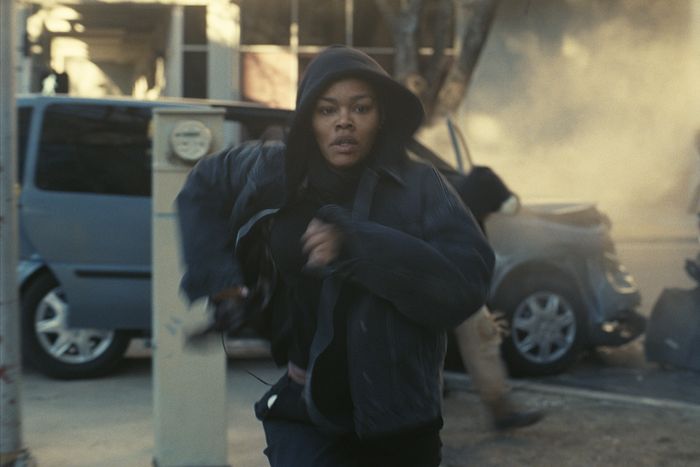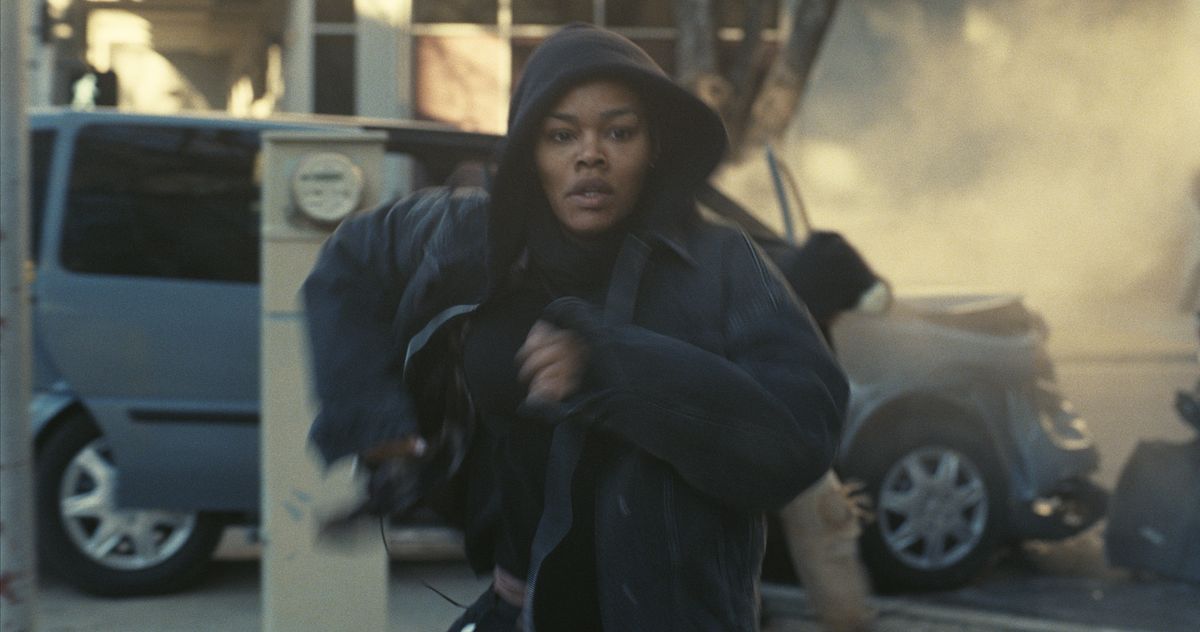
Illustration: Warner Bros. Pictures
There’s only one concrete fact about time in One Battle After Another — at some point, 16 years pass between the film’s propulsive first act and the rest. “Not much has changed,” the activist Perfidia Beverly Hills (Teyana Taylor) tells us in voice-over after that time jump, but the world that her ex-partner Bob (Leonardo DiCaprio) and their daughter, Willa (Chase Infiniti), occupy feels just different enough. There’s “Mo Bamba.” There are nonbinary pronouns. It could be 2018 or 2025 or 2040 when the majority of the film takes place — it’s hard to say.
Since its release, viewers have been arguing about the chronology of One Battle After Another. Although the revolutionary antics of the French 75 resemble the counterinsurgency movements of the 1960s, the first act of the film — in which Perfidia meets Bob, falls in love, gets arrested, then breaks free and gives birth to Willa before disappearing entirely — is definitely not set so far back. There are smartphones, for one, visible upon Perfidia’s arrest. Vineland, the Thomas Pynchon novel Anderson is loosely riffing on, hinges on the relationship between ’60s revolutionaries and ’80s yuppies, but One Battle isn’t set in the 1980s, either.
The film’s opening sequence shows the French 75 freeing dozens of migrants who have been detained at the border. That’s a relatively recent practice — emphasis on relatively. There are migrants detained at the border as I type, but they were also being detained in 2014 during Obama’s second administration. If this first act is set back then, that would place Bob’s time with Willa in Baktan Cross in 2030. But maybe Bob and Perfidia met later — during the Biden administration or anytime up to September 2025, the month of the film’s release, which would place the bulk of One Battle After Another in 2041. This seems to be the common belief among viewers, who have keyed into production details like the sci-fi-ish retrofuturist tech that Steven Lockjaw (Sean Penn) uses to test Willa’s DNA. But the second you think you’ve maybe anchored yourself in time and place, One Battle After Another again throws a wrench with its fully retro car selection. Bob spends a chunk of the movie driving a 1991 Nissan Sentra, and he and other ex-revolutionaries eschew modern smart phones because they can be tracked. All these details lend color to the characters — Willa’s friend having a Yaris, a discontinued Toyota model, is a fun shout for those of us who had high-school friends with Yarises — but not so much to the actual, literal universe of One Battle After Another. Anderson is a character-driven director and seems to have chosen these details for them, not for the movie’s coherency.
In watching One Battle After Another, I was reminded of another film that takes an ingenious approach to time: Christian Petzold’s Transit, which is ostensibly “set” during the Second World War. While its protagonists look and feel and dress the part, the rest of Petzold’s vision of fascist Marseille is up-to-date: modern cars, modern appliances, modern weapons. Are we meant to assume his characters are ghosts? Is this a cost-cutting approach to a period setting? The effect is the same, no matter the reason. The film begins to transcend the notion of a World War II movie to become something much more mysterious and engaging. Similarly, One Battle After Another only becomes more compelling the more the timeline feels off. The French 75 could very well exist now, 16 years ago, or some time in the future. Part of what Anderson leaves the viewer with at the end of the film is the reassurance that revolutionaries keep coming. No matter the time, the place, or the model of iPhone, there’s always someone waiting in the wings ready to step up.

